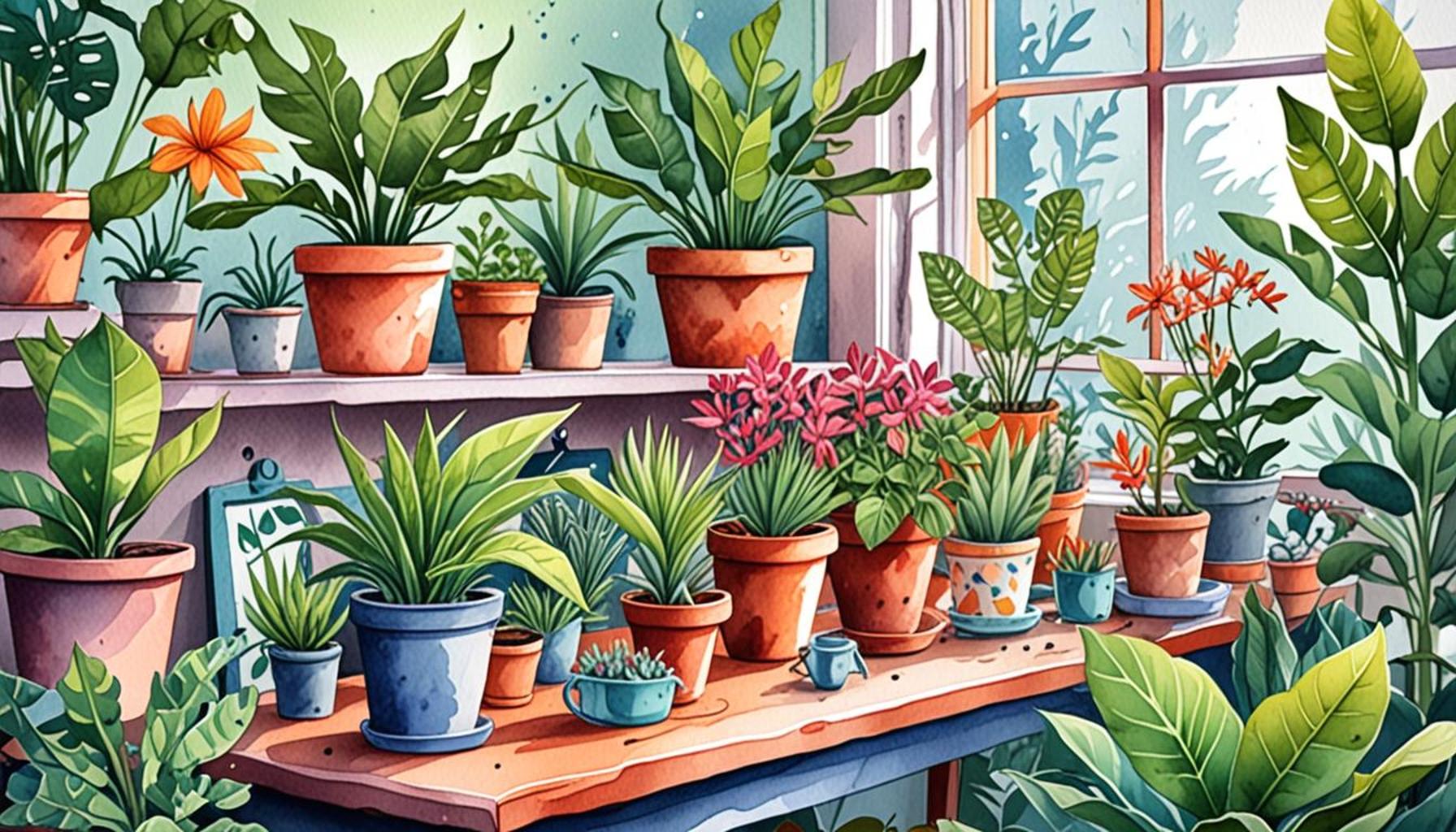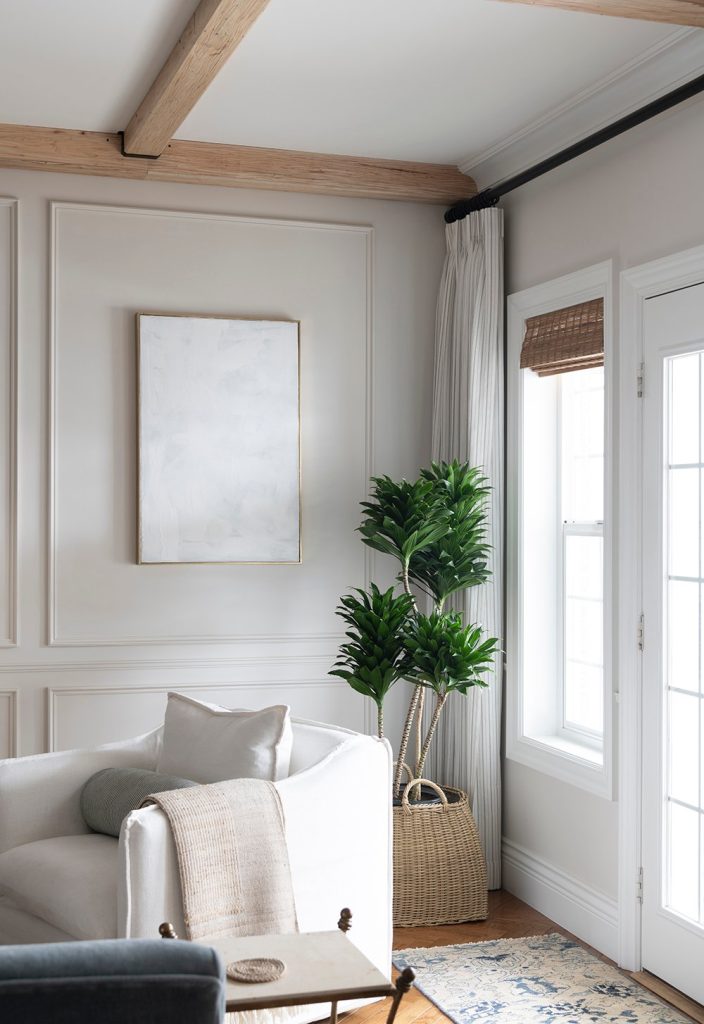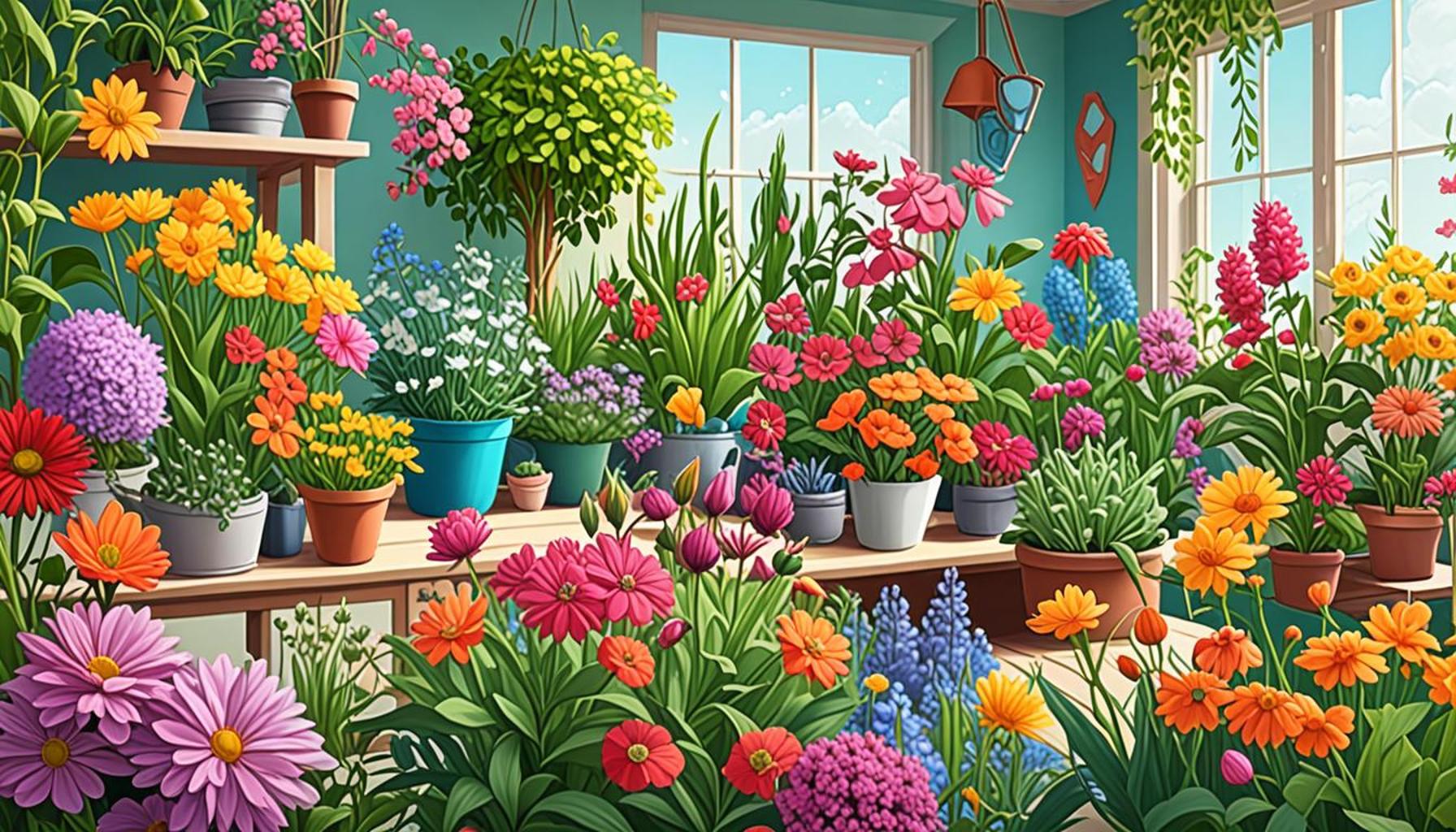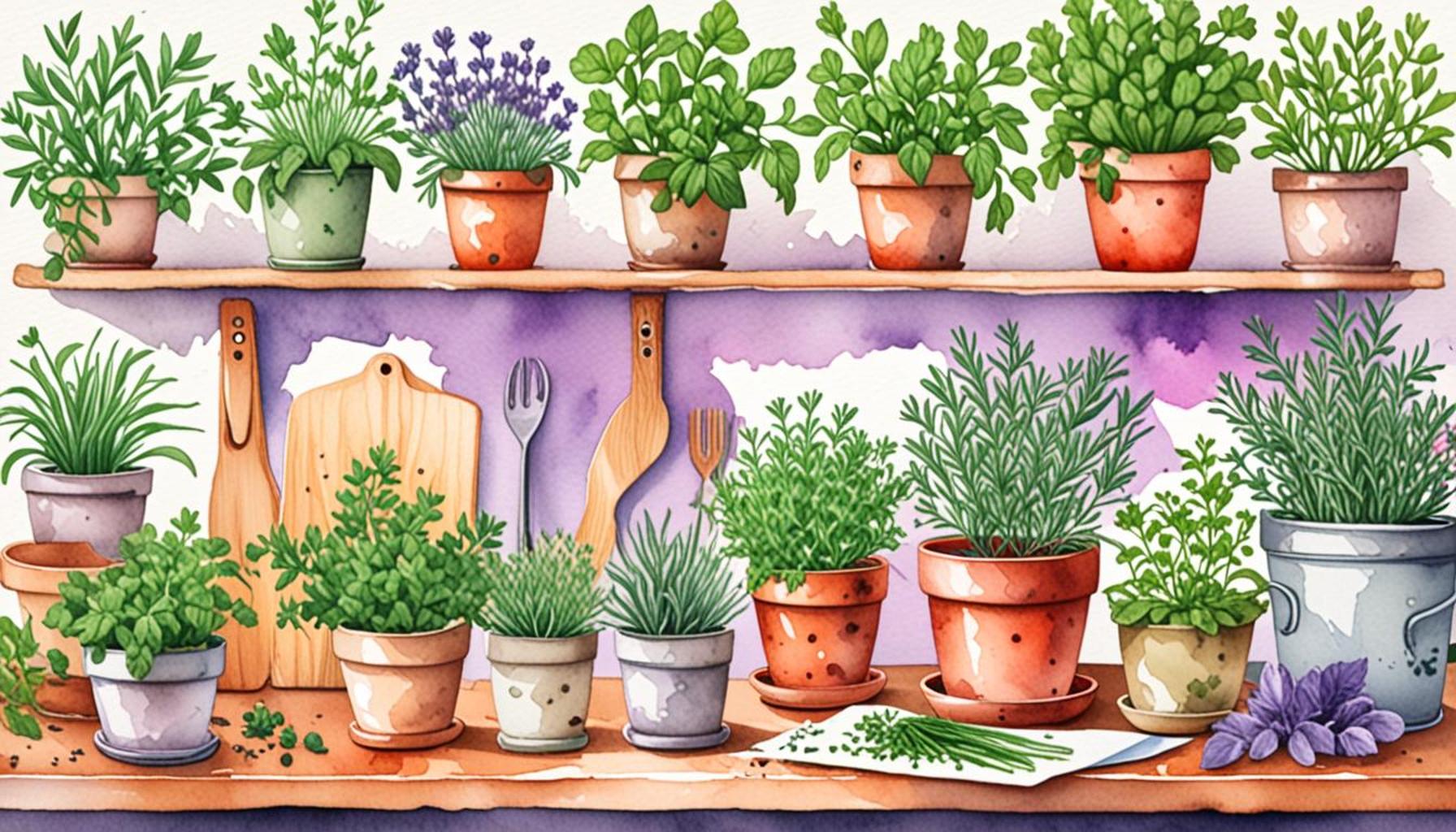How to Choose Plants for Low Light Environments: Tips for Beginners

Discovering Greenery in Shadows
In the world of indoor gardening, low light environments can pose a challenge for many aspiring plant parents. However, the good news is that there are countless options available that thrive in less-than-ideal lighting conditions. Whether it’s a cozy corner in your living room or a dim office space, selecting the right plants can bring life to any area. Incorporating greenery into your home or workspace can improve mood and even increase productivity, highlighting the importance of choosing suitable plants for indoor environments.
Understanding Low Light Conditions
Before diving into the selection process, it’s essential to understand what low light means. Generally, these are spaces that receive:
- Indirect sunlight: This refers to light that does not reach the plants directly but is filtered through curtains or is reflected off walls and furniture.
- Partial shade from windows: Areas that are near windows but are shielded by overhangs, trees, or buildings can often be less illuminated.
- No direct sun exposure at all: Spaces that might be completely enclosed but still benefit from ambient light sources, such as rooms with north-facing windows.
Understanding the specific characteristics of your space is crucial to ensuring your plants not only survive but thrive. Taking the time to monitor light patterns throughout the day can help you make informed choices about plant placements and selections.
Choosing the Right Plants
When it comes to choosing plants for low light, look for varieties known for their resilience. Here are some popular options:

- Snake Plant: This hardy succulent is renowned for its ability to tolerate neglect and a variety of lighting conditions. Its striking upright leaves can add a modern touch to any room.
- Pothos: Often referred to as devil’s ivy, this trailing plant adapts easily to low light and is known for its air-purifying abilities. Pothos can be hung in baskets for a cascading effect or placed on shelves to enhance vertical spaces.
- ZZ Plant: Known for its glossy leaves, the ZZ plant is exceptionally drought-tolerant and thrives in low-light environments. It’s an ideal choice for busy individuals who may not have the time to care for more temperamental plants.
These plants not only beautify your space but also contribute to a healthier indoor environment by helping to purify the air, making them a worthwhile investment for your home or office. Additionally, learning about their individual care requirements, such as watering frequency and humidity preference, can help ensure their longevity and vibrancy.
By curating a selection of low light-friendly plants, you can transform even the shadowy corners of your indoor spaces into lush oases, ultimately enriching your daily life with nature’s calming presence.
DISCOVER MORE: Click here to learn about soil testing
Essential Factors for Low Light Plant Selection
Choosing the right plants for low light environments involves considering several important factors that contribute to the success of your indoor gardening journey. Since these unique conditions influence how plants grow and flourish, understanding their specific needs will enable you to make informed decisions. Here are some key considerations to guide you in selecting your low light companions:
Evaluate Your Space
Start by conducting a thorough assessment of the areas you want to fill with greenery. Pay close attention to:
- Measurements: Understand the dimensions and layout of your space to determine what types and sizes of plants can fit.
- Light Levels: Note which corners of the room receive more ambient light and which are perpetually shaded. This can greatly affect plant choice.
- Temperature and Humidity: Low light does not always mean cooler temperatures; some spaces might be warm and dry, which could affect certain plants’ health.
Taking the time to evaluate these factors can help you forge the perfect environment for your new leafy friends.
Know Your Plant’s Light Tolerance
Different plants have varying degrees of light tolerance. For instance, some prefer only low light, while others may tolerate partial shade or very low lighting but require some filtered sunlight or high humidity. Research each species’ light requirements to ensure you acquire plants that can adapt well to your specific conditions.
For instance:
- Ferns: Typically thrive in humid, indirect light environments and can be a great option for bathrooms or kitchens.
- Peace Lilies: Known for their ability to bloom even in low light, these beauties make an elegant addition to any dimly lit area.
- Cast Iron Plant: True to its name, this plant is almost indestructible and can survive in a variety of low light situations.
By prioritizing low light-tolerant species, you can ensure that your indoor garden not only survives but also flourishes.
Consider Maintenance Requirements
It’s essential to assess the maintenance needs of your chosen plants. While certain varieties thrive in low light conditions, they may have specific care requirements that need consideration:
- Watering Frequency: Some low-light plants are more drought-tolerant than others, allowing for a more flexible watering schedule, which is crucial for those with busy lifestyles.
- Soil Type: Ensure that you use the correct soil mixes to prevent root rot, particularly since low-light plants could be more susceptible to overwatering.
- Pruning and Fertilization: Understanding how often to prune or fertilize your plants helps to maintain their aesthetic appeal and healthy growth.
Being mindful of these essential care practices will significantly enhance your ability to nurture and sustain your plants over time.
Arming yourself with knowledge about your space, the plants’ light tolerance, and their maintenance needs will foster a thriving indoor environment filled with lush greenery, even in the dimmest corners.
Understanding Low Light Conditions
When selecting plants for low light environments, it is crucial to first understand what “low light” truly means. Low light doesn’t mean no light; rather, it is typically defined as areas that receive indirect sunlight or light filtered through curtains. Spaces in your home that are furthest from windows or have only limited light for a few hours daily fall under this category. Low light environments often feature unique challenges and require plants that can thrive without basking in sunlight. Some excellent choices for low light situations include the popular Snake Plant, which boasts low maintenance requirements and exceptional air-purifying qualities, and the hardy ZZ Plant, known for its resilience and glossy leaves.
Common Misconceptions
One of the most common misconceptions regarding low light plants is that they do not need any light at all. While many of these plants can survive in lower lighting conditions, they still require some exposure to indirect sunlight to photosynthesize effectively. Another misconception is that all plants that thrive in low light are boring or unattractive. In reality, numerous options come in various shapes and sizes, providing an opportunity for vibrant decoration in your space.
Caring for Low Light Plants
Even though low light plants are generally easier to care for, remember that they still benefit from proper maintenance. Regular inspection for pests, occasional dusting of leaves to ensure optimal sunlight absorption, and understanding their watering needs are all essential practices. Overwatering is a prevalent issue; always check the moisture levels of the soil before adding more water.Ultimately, the key to successfully choosing and caring for low-light plants involves finding the right varieties and tailoring your maintenance routine. This approach will enrich your space, making it livelier and more inviting, even in subdued lighting.
| Plant Type | Advantages |
|---|---|
| Snake Plant | Low maintenance; excellent air purifier |
| ZZ Plant | Resilient; glossy leaves add aesthetic value |
By understanding these fundamental aspects and embracing the right selections, anyone can successfully introduce lush greenery to their low light spaces. With the proper choices and care techniques, you can create a thriving indoor garden, transforming any nook into a harmonious sanctuary.
DON’T MISS: Click here to learn effective harvesting techniques
Additional Plant Features to Keep in Mind
Beyond light tolerance and maintenance requirements, various additional features can help you make informed decisions about the plants you choose for low light environments. These characteristics can enhance not only the aesthetic appeal of your space but also the overall health and viability of your plant collection.
Growth Habit and Size
The growth habit and ultimate size of the plants you select can significantly impact your low light space. Larger plants can serve as focal points in a room, while smaller plants can perfectly complement other décor elements such as shelves or tabletops. Consider these factors:
- Vertical vs. Spreading Growth: Some plants, like the Snake Plant (Sansevieria), grow upright and can fill vertical spaces, while others like Pothos tend to spread out, making them ideal for cascading down from shelves.
- Final Height: Research the final height that your plant may reach to avoid blocking light sources or obstructing pathways. Ensuring that the plant does not grow too large for its designated space is essential in maintaining a tidy appearance.
By selecting plants with appropriate growth habits, you can achieve a harmonious arrangement that complements your specific environment.
Leaf Type and Texture
The type and texture of leaves can also impact your plant selection process. Different leaf characteristics can enhance the visual appeal and establish a sense of touch within your indoor garden:
- Glossy vs. Matte Leaves: Glossy leaves, like those found on the ZZ Plant, reflect light beautifully and can brighten up dark corners. Matte leaves, such as those on ferns, may absorb light and provide a softer aesthetic.
- Leaf Shape: Plants such as the Chinese Evergreen (Aglaonema) boast variegated foliage that adds interest and color to low light spaces, while others like the Spider Plant have long, arching fronds that create a dynamic visual.
Choosing a variety of leaf shapes and textures can contribute to captivating indoor displays that keep the eye engaged and connect with the overall design of your space.
Air Purification Qualities
In addition to functionality and aesthetics, consider choosing plants known for their air purification capabilities. Research conducted by NASA has identified several houseplants that can effectively remove toxins from the air, contributing to a healthier indoor environment:
- Peace Lily: As previously mentioned, it thrives in low light, and it’s also efficient in filtering out pollutants such as formaldehyde and benzene.
- Spider Plant: This easy-to-maintain plant is known to be a great air purifier, making it a smart choice for home or office use.
- Bamboo Palm: Excellent for low light conditions, this palm not only adds a tropical element to your space but is also effective at removing indoor pollutants.
Integrating air-purifying plants into your collection offers the dual benefit of aesthetic enhancement and health improvement in your living or working environment.
When selecting plants for low light situations, taking into account growth habits, leaf characteristics, and air purification properties can greatly enrich your indoor green landscape. With careful consideration and a bit of research, you’ll be well-prepared to create a lush, vibrant, and healthful atmosphere within your dimly lit corners.
DISCOVER MORE: Click here for essential storage tips
Conclusion: Cultivating Greenery in Low Light
Choosing plants for low light environments can seem daunting at first, but with a little guidance and a keen eye for detail, even the dimmest corners of your home or office can be transformed into lush green spaces. Remember, it’s essential to prioritize light tolerance alongside maintenance needs, which will help ensure that your plants thrive rather than merely survive.
As you venture into this green journey, consider not just the basic requirements, but also the growth habits, leaf characteristics, and potential air purification qualities of the plants you choose. By selecting varieties that suit your specific low light conditions, such as the versatile Snake Plant or the striking Peace Lily, you can enhance both the aesthetic of your environment and the quality of the air you breathe.
Additionally, think about how the size and texture of leaves can add dimension and visual interest to your space. Adopting a mix of leaf shapes and types will further enliven your indoor oasis, creating a captivating display that draws the eye.
As you nurture these resilient companions, you’ll develop a deeper appreciation not only for their beauty but also for the vital role they play in enriching your indoor environment. So take the plunge into the world of low-light plants—each selection is an opportunity for creativity, growth, and promoting a healthier living space. With these tips in hand, you are well-equipped to make informed choices and enjoy your journey into the vibrant world of houseplants.


